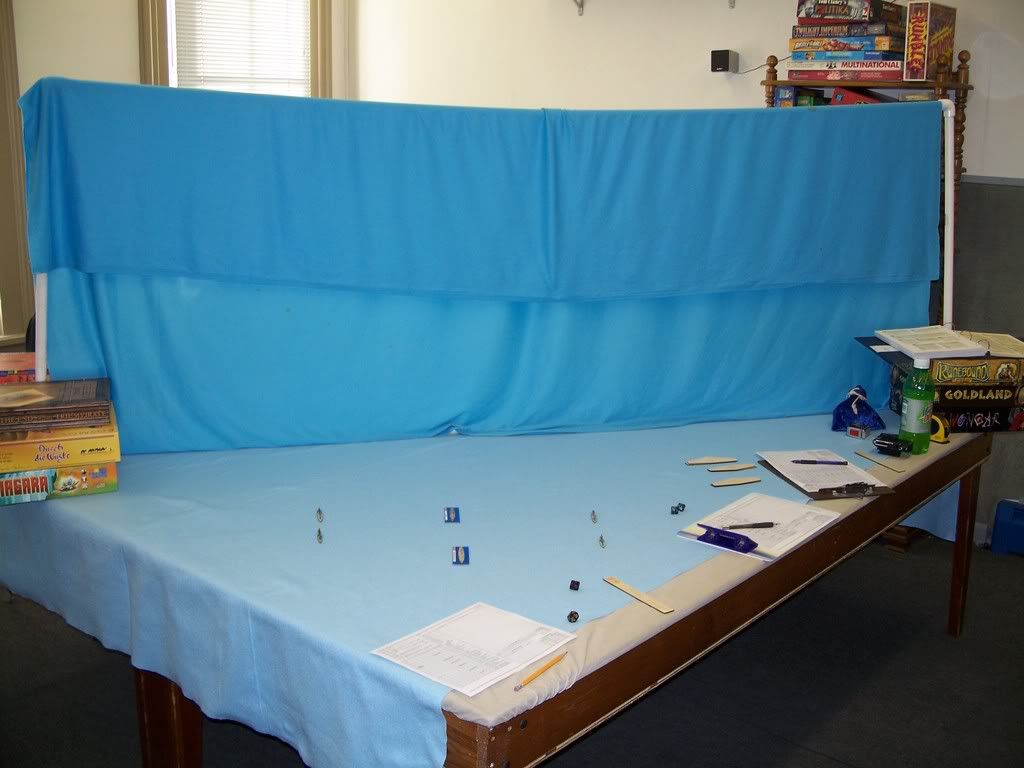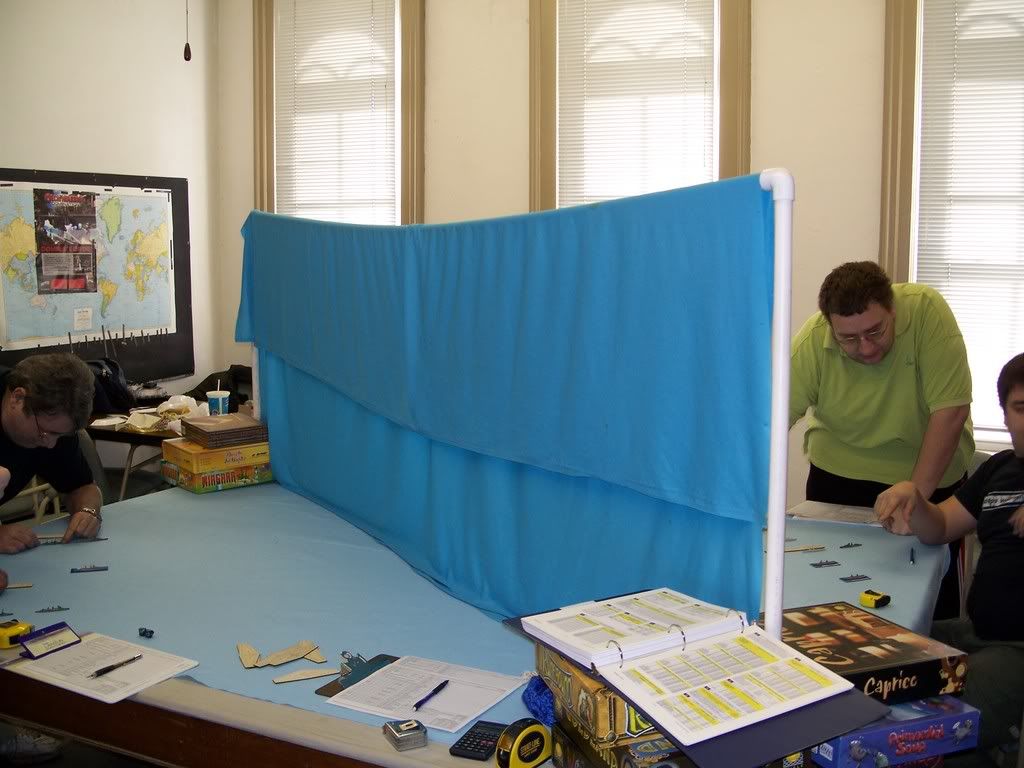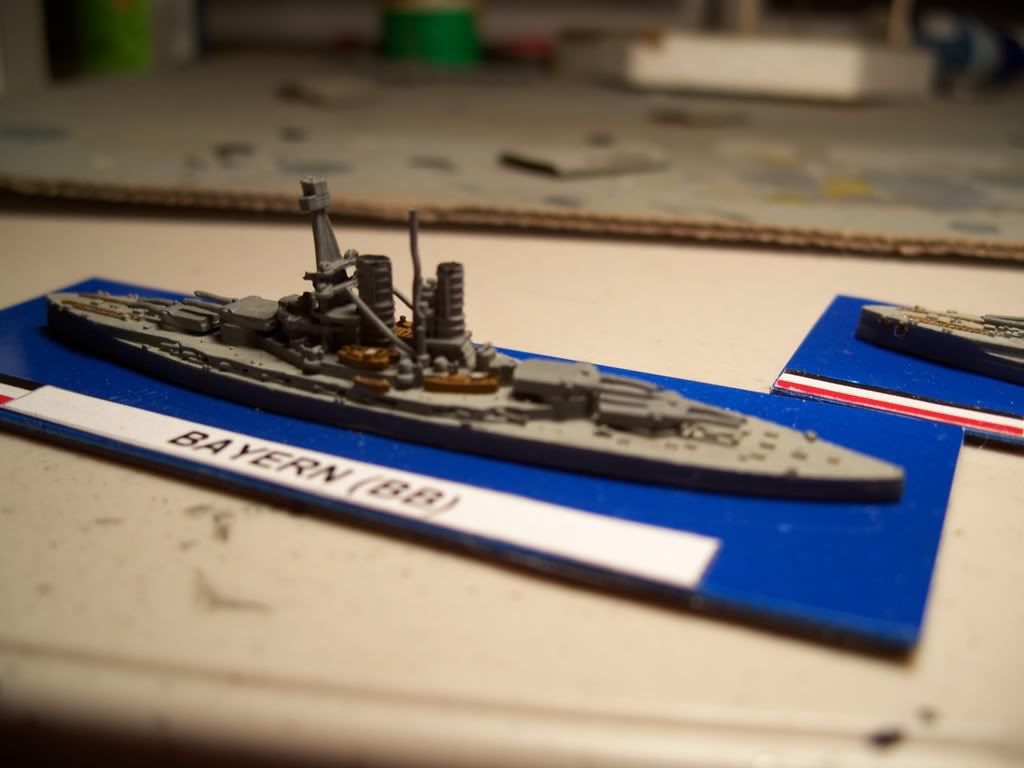Just wanted to share some photos of my models i have been doing have learned a lot of techniques and i believe I;m getting better still have lots of room for work but here are some of my pictures.
The first few is a game we did today using a blind made out of PVC pipe the boxes on the ends was a temporary thing havent got bases for the end pieces yet. The idea worked well and keep each side guessing on which way they where moving, plus you didnt know your enemy ships till spotting ranges where close enough to pull the blind out of the way.
By the way the rules used was Seekrieg 5.


Here are all the 5 sisters of the Kaiser class BB






fullmetaljacket
[/img]
